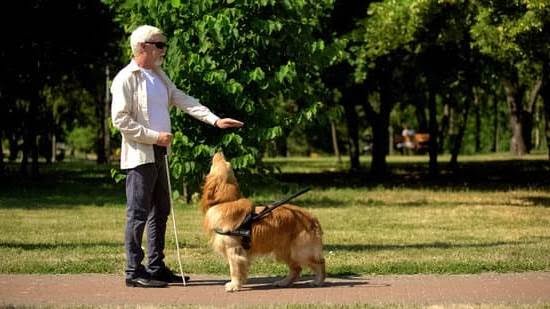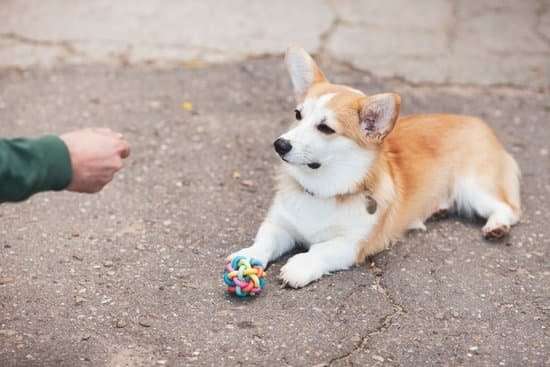Introduction
Training a pet can seem like a difficult process, particularly if you are new to animal training. However, by understanding the basics of pet behavior and determining the motivation that works best for your particular pet, you can ensure a successful training experience.
Before beginning to train your pet, it is important to determine what type of reward system will be most effective for them. Some animals respond well to positive reinforcement such as treats or verbal praise, while others may require a more assertive reward system such as clicker training or repetition. Every animal is different and it is important to understand what rewards are going to motivate your pet in order for the training process to be effective. Additionally, it is wise to select desirable rewards that you’ll actually want your pet to continue performing in order to receive; otherwise they will soon lose interest in the task at hand.
Once you have decided on an appropriate reward system for motivating your pet, come up with an action plan or schedule outlining specific goals that need to be achieved, tasks that need completing throughout the day or week and how long each session should last. By creating a clear action plan and sticking with it, you’ll find it easier when it comes time to begin actually training your beloved companion. Furthermore, breaking tasks into smaller steps will make them easier for pets to understand and complete; this will also help keep both you and your pet motivated as tasks become repeated habits rather than tedious chores. Finally, remember that animals learn through repetition and consistency so stay committed throughout the process!
Steps for Preparing for Training Success
1. Get to know your pet: Before beginning any training program, you should have a full understanding of your pet’s natural behavior and communication style. Think about their individual traits and needs to help guide you as you learn how to best train them for success.
2. Build trust: Pets thrive on routines, stability and consistency. Creating an atmosphere that promotes these elements will help build a bond of trust with your pet. Showing them affection, giving them treats and providing plenty of praise will go a long way when establishing a trusting relationship between the two of you.
3. Start slow: Break complex commands into smaller steps so that your pet can easily comprehend each stage of learning. Start by teaching basic house manners such as coming when called or settling into “down” position before progressing to commands such as fetch or stay.
4. Be patient: The rewards of successful canine-training come with time, effort and consistency — not overnight success! As you practice commands with your pet take breaks if necessary and don’t feel discouraged if progress isn’t immediate. Even the smallest successes are still worth celebrating!
5. Use positive reinforcement: Positive reinforcement is the key element in any successful animal discipline system which teaches behaviors in hopes of getting rewards (positive reinforcement) rather than avoiding punishments (negative reinforcement). Treats, toys, verbal rewards and praises are all effective methods for positive reinforcement after mastering basic skills with your pet!
Creating the Right Training Environment
Training a pet can be an enjoyable and rewarding experience if done correctly. Creating the right training environment is the key to successfully teaching your pet new behaviors. It’s important to ensure that the environment is motivating, relaxed, and conducive to learning. Start by eliminating distractions and devoting time each day for teaching so that your pet knows that it’s “training time.” Develop a set of rules for your pet and teach them in a consistent manner so that your pet understands what you expect from it. Make sure that you praise and reward good behavior with treats, toys or verbal acknowledgment. Training doesn’t have to be intimidating – break tasks down into manageable parts and ensure that you repeat each part several times until your pet has mastered it before moving onto the next step. Lastly, remain patient with your pet as there may be some trial or error before they achieve their desired results.
Exploring Popular Obedience Commands and Specialized Tricks
Training a pet is a rewarding experience that encourages better behavior, long-term health and overall happiness. The first step in your pet’s obedience training journey is to understand the basic commands you can use to encourage normal everyday behaviors. Popular commands include ‘sit’ and ‘stay’. Those two simple words become even more powerful when paired with positive reinforcement such as treats or verbal praise. Other primary obedience commands include ‘come’ for calling your pet back to you, ‘lie down’, and ‘leave it’ for teaching them when it’s time to ignore a distraction or food item. Once the basics are mastered, you can move onto some specialty tricks like rolling over and playing dead. With consistency and patience, these skills can be achieved eventually!
Once the basic commands are mastered, there are tons of fun specialized tricks that people often try to teach their pets! Many dog owners enjoy teaching their pup how to shake hands by having them lift one paw off of the ground when asked. Teaching a pet “speaki” is another fun trick; this involves rhythmically barking on command. Cats can also learn many useful tricks too such as no-fuss litterbox use and fetching small objects like balls or feathers. And lastly, one of the most beloved (And sometimes mischievous) tricks that a lot of animals can learn is how to open cupboards or doors with a specific sequence of touches or gestures – perfect for curious critters with opposable thumbs!
In conclusion, teaching your pet obedience commands are important for safety and stress relief purposes but they can also be used as an opportunity for bonding alongside learning cool new skills!
Incorporating Positive Reinforcement Techniques
Positive reinforcement is one of the best methods for training a pet. Developing an understanding of your pet’s behavior, along with consistent and positive reinforcement can create a strong bond between you and your pet. To utilize this technique, first identify the specific behaviors you want to emphasize; for example, sit, come, stay, lay down. When your pet succeeds in one of these tasks, reward them with verbal praise or treats. It is important to remain consistent and only reward desirable behaviors to ensure successful training. Establish consequences such as verbal scolding or ignoring undesirable behavior to discourage it; however, physical discipline or punishment should never be used. Finally remember that patience and dedication are key in successfully training a pet. Building trust and respect will take time; but once established you will be rewarded with a well-trained companion that will bring joy into both of your lives!
Responding to Unexpected Training Results
If you’re training a pet and not seeing the desired results, it’s important to make sure you remain positive. Consider any changes in your pet’s behavior that may have been prompted by something other than your intended training technique. Stress and anxiety can cause pets to react differently when being trained, so if that’s the case, look at ways in which you can reduce those factors before attempting to train them again. Sticking to a daily routine is also helpful – animals usually enjoy knowing what to expect and will be more willing to learn if they’re comfortable with their environment. If the unexpected results persist, try changing approaches by adjusting reinforcement techniques or using different rewards. Additionally, let your pet explore its surroundings: dogs naturally want to sniff new things or experience new places; cats may get used to furniture being close together and benefit from having more room to play. Finally – and perhaps most importantly – seek professional help if nothing else works as getting an expert opinion can provide invaluable guidance when it comes to training your pet.
Utilizing Everyday Activities as Training Opportunities
Everyday activities can provide great training opportunities for a pet, regardless of the age or breed of the animal. It’s best to start by teaching basic commands such as “sit” and “stay”. Start by pairing these words with treats and positive reinforcement when the pet follows a command. In addition to commands, it is important to train a pet on how to appropriately respond in common scenarios, such as how to properly greet guests at the door or other animals while walking. When introducing new animals, it is important to remember that it can be stressful for pets, so supervision during introductions is key. Additionally, teaching your pet how to properly walk on a leash is a must-have skill that will make walks much more enjoyable. Upon seeing distractions such as other dogs or people, calmly but firmly issue a verbal cue and then if needed use firmer commands (such as sidewalk/heel) or light tugs on both sides of their collar around their neck to get their attention back on you and away from distractions. As walking becomes routine through consistent practice the need for verbal cues and tugs should lessen over time. Last but not least, even if its difficult with an excited pup make sure they earn rewards like treats and praise only when they are sitting calmly at your side; this way you can reinforce their ability to stay focused while out enjoying fresh air together!
Troubleshooting Tricky Behaviors and Commands
Troubleshooting tricky behaviors and commands can seem tough, but it is important in order to create a positive relationship between pet and owner. Here are some tips for fixing bad behavior:
1. Identify the activity or behavior you’re trying to modify – it could be anything from barking at people or furniture chewing.
2. Focus on positive reinforcement – reward your pet with treats, praises and affection when they execute desirable behaviors like sitting patiently while someone enters the room. If they misbehave, avoid scolding them; instead calmly redirect their focus onto something else.
3. Reinforce basic commands such as “sit” and “stay” – this will help teach your pet that certain behaviors won’t be tolerated while reinforcing good behavior when they obey your command. Utilizing a clicker or other audio cue can also help with this step.
4. Make sure exercise needs are met – pets have lots of energy and need to work it out through activities such as fetch, tug-of-war, running around and playing games like hide-and-seek or follow the leader. This is an important part of training since an exhausted pet is generally more likely to obey commands than one with plenty of stored up energy!
5. Schedule specific times for both playtime and quiet time – even trained animals will get bored if their routine becomes too predictable, so make sure to vary activities as much as possible without getting overwhelmed or forgetting about everyday duties such as feeding or following regular dental cleaning schedules (for dogs). Doing this will also help create an insistent routine that your pet can depend on, making them calmer overall in general situations where the expectation is less clear cut such as meeting new people or dealing with loud noises outdoors.
Staying Consistent to Achieve Desired Results
Consistency is key when it comes to training a pet. Positive reinforcement, such as food rewards or vocal praise, should be used for desirable behaviors. On the other hand, negative reinforcement, such as ignoring undesired behavior or offering an alternative acceptable behavior (e.g., redirecting your dog’s attention away from trash cans by throwing a toy), should be used sparingly and never in a punitive manner. If a pet does not comply with commands or shows signs of confusion or stress when being trained, it may be time to take a step back and reconsider the technique being used.
When training a pet, it is important to remain consistent with instructions and expectations. Depending on how quickly the animal learns, new commands or tricks may be added gradually over time. By consistently practicing commands at regular intervals while offering positive reinforcement for successes, pets can gain better understanding of what is expected of them which will help them learn faster. Additionally, patience is key when trying to train any pet as even simple tasks may require multiple repetitions before becoming ingrained in their memories. With commitment and practice, the desired results can soon become a reality!
Conclusion
The reward of training a pet is undeniable, and with patience and consistency, you can help create a lifelong bond with your fur baby. Training builds trust and helps to foster a sense of security between both you and your pet. Training is also essential for dog owners who have children as it teaches pets how to behave around people, dogs and other animals. In addition, trained pets are more likely to follow commands from their owners, making it easier to control them in tricky situations or during playtime in busy areas. Further, the feeling of accomplishment when learning something new can be soothing for the pet owner’s spirit as much as it is for the animal’s. The bond between an owner and pet multiplies tenfold when formally trained which leads to mutual happiness on both sides. All in all, taking the time to properly train a pet will help them live a happier life with more structure and discipline while enriching their relationship with their human companions at home.

Welcome to the blog! I am a professional dog trainer and have been working with dogs for many years. In this blog, I will be discussing various topics related to dog training, including tips, tricks, and advice. I hope you find this information helpful and informative. Thanks for reading!





